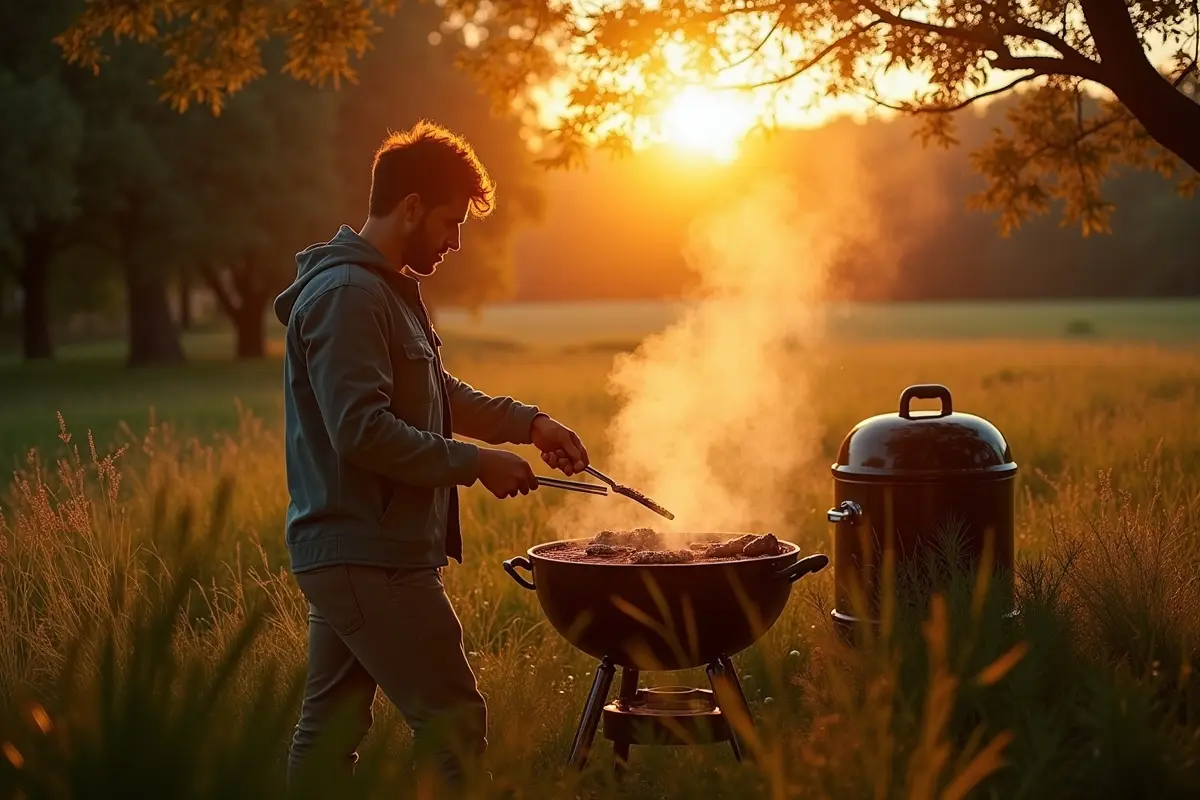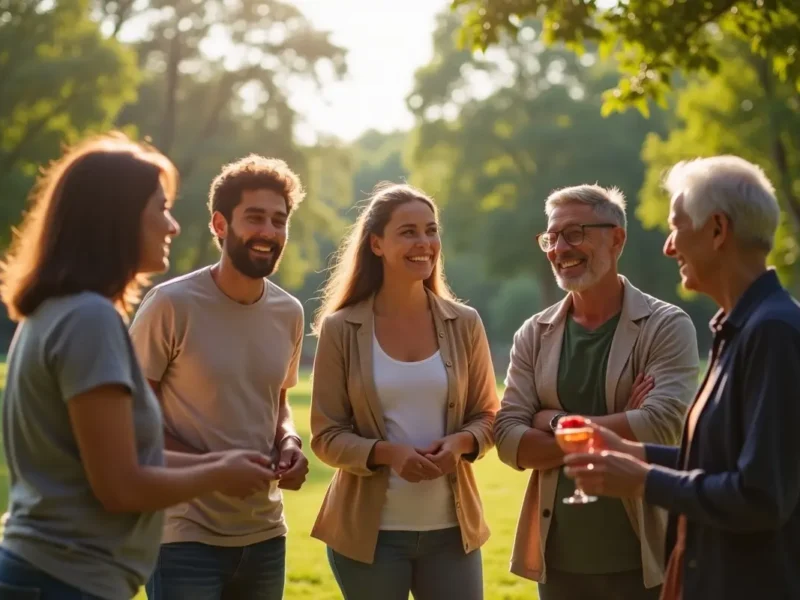Outdoor cooking is a simple way to enjoy fresh air and good food at the same time. It allows people to connect with nature while preparing meals. Planning ahead makes cooking outdoors easier and safer.
Choosing the right equipment is important for efficiency. Knowing basic cooking techniques helps prevent mistakes. Outdoor cooking can be relaxing and enjoyable for all skill levels.
Start small and try new methods to see what works best for you before exploring advanced setups. Read on to learn practical tips and ideas for outdoor cooking that anyone can follow.
Contents
- 1 Choosing the Right Spot
- 2 Essential Tools for Outdoor Cooking
- 3 Fire Safety Basics
- 4 Meal Planning Made Simple
- 5 Cooking Techniques for Outdoors
- 6 Easy Breakfast Ideas
- 7 Lunch and Dinner Options
- 8 Snacks and Quick Bites
- 9 Staying Hydrated
- 10 Cleaning and Maintenance
- 11 Compact Cooking Gear
- 12 Tips for Enjoying the Experience
- 13 Discover Outdoor Cooking Benefits
Choosing the Right Spot
Finding a safe and open area is the first step in outdoor cooking. Make sure the ground is flat and clear of debris. Avoid areas with low-hanging branches or dry grass. Consider how wind may affect flames or smoke. Pick a spot near water if possible for cleaning and safety.
Keep your cooking area organized to prevent accidents. Set up a small table or surface for prep work. Plan where to place trash and leftovers for easy cleanup. A well-chosen spot makes cooking easier and more enjoyable.
Essential Tools for Outdoor Cooking
Basic tools make outdoor cooking simple and efficient. A portable stove or grill is usually enough for most meals. Bring pots, pans, and utensils that are easy to carry and clean. A sharp knife is important for preparing ingredients quickly.
Include a cutting board and a heat-resistant surface. Carry fire starters or matches in a waterproof container. A lightweight cooler helps keep perishable foods fresh. Don’t forget utensils for serving and eating. Good tools reduce stress and make cooking smoother.
Fire Safety Basics
Fire safety is crucial when cooking outdoors. Keep water or a fire extinguisher nearby at all times. Never leave a fire unattended. Avoid using flammable liquids to start a fire. Clear the area around the fire of leaves and other fuel.
Keep children and pets away from flames. Know how to fully extinguish a fire before leaving the area. Wear non-flammable clothing when cooking near open flames. Being careful prevents accidents and protects the environment.
Meal Planning Made Simple
Plan meals that are easy to prepare outdoors. Choose foods that cook quickly or ahead of time. Use fresh ingredients that do not spoil easily. Consider one-pot meals for simplicity. Bring pre-cut vegetables or pre-marinated proteins.
Plan for snacks and beverages to keep energy up. Think about how to store leftovers safely. Check weather conditions to adjust meals if needed. A clear plan makes outdoor cooking stress-free.
Cooking Techniques for Outdoors
Grilling and boiling are the most common outdoor cooking methods. Roasting over coals adds flavor without extra tools. Steaming or using foil packets reduces cleanup. Slow cooking can be done with covered pans on low heat.
Stir-frying works if you have a stable stove. Pre-boiling ingredients speeds up final cooking. Try simple sauces or seasonings to enhance flavor. Practice different methods to see what suits your style. Learning basic techniques builds confidence outdoors.
Easy Breakfast Ideas
Breakfast outdoors can be quick and filling. Eggs cook well in a pan or foil packet. Oatmeal or porridge works with just hot water. Toast or sandwiches are simple and satisfying. Fruit adds freshness and vitamins.
Pre-made pancakes can be heated over the stove. Consider using lightweight cookware for efficiency. Hot drinks make the meal enjoyable and warming. Simple breakfasts start the day right when cooking outdoors.
Lunch and Dinner Options
Lunch and dinner can stay simple yet tasty. Grilled vegetables and proteins are easy to manage. Wraps or sandwiches work if you have limited heat. One-pot soups or stews save time and dishes.
Rice or pasta dishes cook quickly and fill up the group. Pre-marinated ingredients add flavor with little effort. Fresh salads or sides balance heavier meals. Carry condiments in small containers to avoid mess. Planning easy options ensures everyone eats well outdoors.
Snacks and Quick Bites
Snacks keep energy up during outdoor activities. Nuts and dried fruits are portable and healthy. Cheese and crackers are filling without refrigeration for a short time. Fresh fruits work if you can store them safely.
Energy bars are convenient for long hikes. Toasted marshmallows make a simple treat over a fire. Pre-cut vegetables can be dipped in small sauces. Snacks allow flexibility between main meals. Carrying a variety keeps everyone satisfied.
Staying Hydrated
Water is essential when cooking and spending time outdoors. Carry enough for drinking and cleaning. Use bottles or collapsible containers for easy transport. Avoid sugary drinks that can dehydrate.
Boiling water makes it safe to drink if unsure. Add electrolytes for long hikes or hot weather. Check water sources nearby before planning your trip. Drinking regularly prevents fatigue and heat issues. Staying hydrated improves focus and energy while cooking.
Cleaning and Maintenance
Clean as you go to reduce mess outdoors. Use biodegradable soap when possible. Keep trash and food scraps contained. Rinse utensils and cookware immediately after use. Dry items before storing to prevent rust or damage.
Pack small scrubbers or cloths for tough stains. Check stoves or grills for wear before each trip. Proper cleaning extends the life of your tools. Leaving the area clean protects the environment.
Compact Cooking Gear
Compact gear is ideal for outdoor cooking. Portable stoves save space and weight. Lightweight pans and utensils are easy to carry. Collapsible containers reduce bulk in a backpack. Foldable tables or surfaces make prep easier.
Small coolers keep perishable items safe. Even a single pot can handle many meals. Some stoves allow quick boiling and heating, like this jetboil zip. Using minimal gear increases flexibility and convenience outdoors.
Tips for Enjoying the Experience
Enjoying outdoor cooking is about more than meals. Take time to appreciate nature and surroundings. Invite friends or family for social meals. Experiment with simple recipes to find favorites.
Use music or natural sounds to enhance the mood. Stay comfortable with proper clothing and seating. Capture moments with photos if desired. Relax and take breaks when needed. The experience is as valuable as the food itself.
Discover Outdoor Cooking Benefits
Outdoor cooking brings together nature and practical skills. It allows people to enjoy fresh air while preparing meals efficiently. Planning, simple tools, and safety make it enjoyable. Choosing the right location and cooking methods ensures success.
Snacks, hydration, and easy cleanup keep the process smooth. Compact gear and flexible meals make it accessible to anyone. Start small and grow your skills to make outdoor cooking a rewarding habit.
Should you wish to read more, you may explore our blog. We’ve got more topics!



